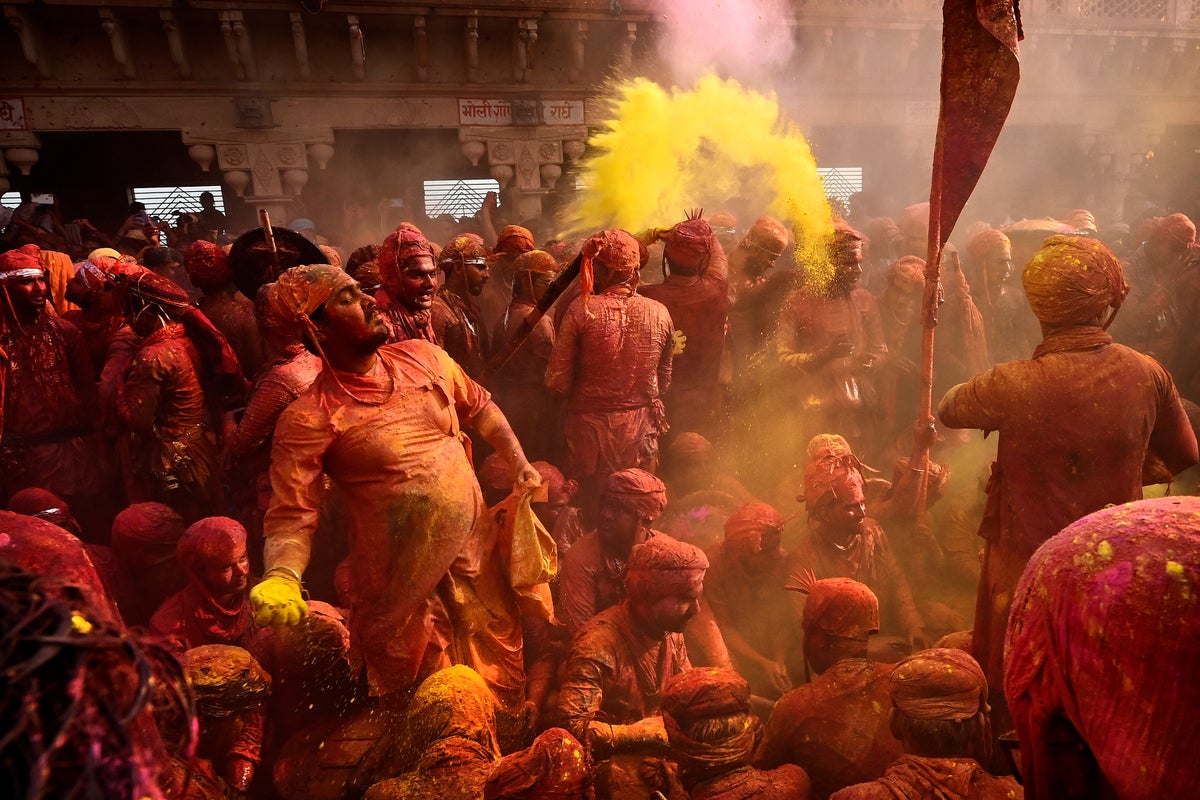
Hundreds of women in two north Indian towns celebrated "Holi,” the Hindu festival of colors, by playfully hitting men with wooden sticks in response to their teasing as part of a ritual.
After two years of subdued revelry due to COVID-19, the Holi celebrations that began last week recreated the legend of the Hindu god Krishna spraying his consort Radha and her friends with red, yellow, green and saffron colors. The women were from Nandgaon, the hometown of Krishna, and the men were from Barsana, the legendary hometown of Radha.
The men wore turbans and held shields above their heads to protect themselves from the women's hits in the mock battle.
The devotees, smeared in colored powder, then prayed at the Nandagram Temple near where Hindus believe the god Krishna and his brother Balram spent their childhood. The temple was built at the beginning of the 19th century.
They exchanged sweets and drinks as part of the celebrations.
Some men were caught by women and made to dress like them. They then sang and danced along with the women.
The "Lathmar Holi” (Stick Holi) festival attracts visitors from around the world in large numbers to experience the celebrations, which are a symbol of India’s cultural heritage. The twin towns of Nandgaon and Barsana are about 115 kilometers (70 miles) south of New Delhi.
Holi traditions vary across India. In most parts, the holiday will be celebrated on Wednesday, turning the streets and lanes into playgrounds with people of all faiths joining the festivities. They also include water balloons and squirt guns.
Holi, which marks the advent of spring, is widely celebrated in India, Nepal and other countries with large Indian subcontinent diaspora populations.







